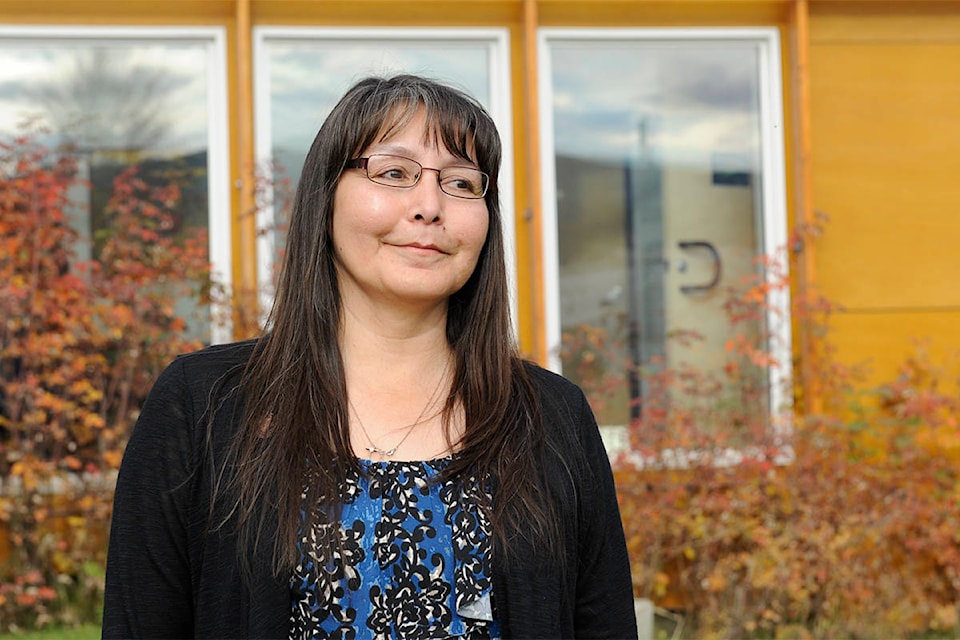The Fortymile caribou herd can now be hunted, ending a 25-year hiatus.
But the development moves ahead without Tr’ondëk Hwëch’in’s blessing, with its chief blasting the decision.
Chief Roberta Joseph told the News that council declined hunt plans in October due to a lack of information presented by the Yukon government.
“We strongly feel that the Yukon government has taken unilateral steps to manage the Fortymile caribou. The Yukon government is not being true to the conditions outlined in our agreement, and that is to develop a harvest management plan.”
The First Nation has been negotiating a draft management plan that would determine where and how many caribou can be hunted.
“We have been encouraging them to sit at the table to complete the management plan and that hasn’t been done yet,” Joseph said.
“Tr’ondëk Hwëch’in has made a huge sacrifice on the Fortymile caribou. We have volunteered not to harvest them for almost 25 years due to some real serious concerns of declining population at that time.
“Although there’s been an increase in population, our people are still in conversation mode.”
The herd’s population has bounced back, according to a Yukon government official, now numbering roughly 84,000 animals.
It wouldn’t be fair to say the herd has recovered, though. There used to be 200,000 animals in its heyday, said Rob Florkiewicz, harvest coordinator with Environment Yukon.
The hunt is a test case. It stems from a recommendation from the Yukon Fish and Wildlife Management Board.
The management board didn’t respond to requests for comment.
“We’re sort of dipping our toe in the water,” Florkiewicz said. “Now, we’re just sort of moving into, OK, what would this look like in the future? The point is this is the first time in a long time. We need to learn. We need to learn what does this look like? Are there any issues that come up as we do this?”
There are 225 permits available for Yukoners. They are available by interval. Twenty-five are up for grabs during 10-day periods.
Harvesting the herd, which is located along the Top of the World highway and the Fortymile area near Dawson City, is going to be tightly managed between now and March 31, said Florkiewicz, which is when the hunt ends.
“One of the objectives of the management plan is to have the Fortymile caribou reoccupy historic ranges in Yukon, which, at one point, may have come as far down as Whitehorse,” he said.
The herd is mostly in Alaska. Management plans there over the years included predator management, increased trapping efforts in the herd’s ranges, Florkiewicz said. The herd hasn’t been hunted since 1995 in the Yukon. These issues have led to the resurgence in numbers, he said, noting that in the 1970s the herd hit a low of 6,500.
Hunters won’t be able to take one Fortymile caribou if they have hunted outside the designated management zone or if they have taken two inside it. If they’ve hunted one from the management zone, they’re eligible for a second seal.
There are mandatory reporting requirements, regardless of the outcome of a hunt. When a caribou is killed, it must be reported within 72 hours of a permit’s expiry. An incisor bar — row of teeth along the lower jaw — must be submitted, too.
Those wanting to hunt or camp on Tr’ondëk Hwëch’in settlement lands must receive the green light from the First Nation.
Joseph said no decision has been made when it comes to allowing hunters in these areas.
“What is important is that the government and ourselves need to agree on where the hunts are gonna take place, the dates and the numbers that are gonna be issued,” she said. “That needs to be part of the plan in order to initiate the regulations.”
There are too many information gaps to adequately manage the herd, she said. That’s why she wants a government-sanctioned study to take place in the Yukon in order to gauge migratory patterns of the herd and its habitat.
“We don’t have enough information in the Yukon,” she said. “Do we have a high enough population coming into the Yukon that we can have an extensive harvest, right? We want to be sure that we are not going to be wiping out the number of caribou that migrate into the Yukon.”
Joseph also wants to see traditional knowledge represented.
Hunters are urged to not leave entrails near roads, highways or camps. Chasing caribou on snowmobiles is against the law, along with carrying a loaded firearm on one.
Contact Julien Gignac at julien.gignac@yukon-news.com
